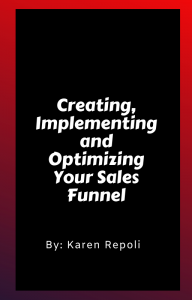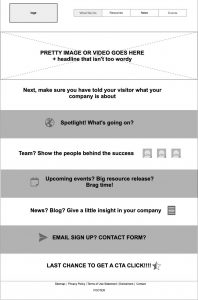
Data is foundational. CRM and marketing automation are merely vessels, and it is the data they contain that is the true treasure. It’s the single most critical element when it comes to determining revenue success or failure. The outcome of your marketing efforts depend completely on the input. What do you get from an automated process when you put garbage in? Garbage out.
In a recent interview by Paul Dunay, I had the chance to talk about the importance of data for marketers. It was a great opportunity to speak my mind on the challenges marketers face when it comes to bad data. Here are some of the highlights.
The bad data debacle with trade show lists
Marketing lists, especially trade show lists, are the Typhoid Mary of duplicate creation in your database. Because your customers or existing prospects are visiting your booth, and the booth staff scans them indiscriminately, you’re creating duplicates when it’s time to import the list. It’s important to take preventative measures to avoid this duplicates horror show:
- Standardize the list data so that there are no CAPS, strange $ #%! characters, unorganized titles (Dir. of Marketing vs Director of Marketing) or missing fields
- Check for duplicate records, opportunities, accounts and contacts
- Use an automated, trusted tool or vendor to handle this process (and ensure they integrate with your CRM or marketing automation of choice)
Bad data from trusted vendors
There’s one fundamental reason why lists purchased from data vendors have data quality challenges: Contact data ages like fish, not wine. It gets worse as it gets older, not better. Just because you are buying data does not mean that it’s fresh. Data vendors suffer from the same data decay as everyone else. If they guarantee that it’s updated every six months, that means it’s somewhere between 15% and 20% outdated from the day you receive it.
Ensure you’re getting strong data from great vendors by asking vendors these questions:
- How old is your data?
- What is the source of your data?
- Data standards: How will you deliver the data?
- Transparency: Can I see the source of the data?
- What is the record by record data age?
- How do you prevent future duplicates?
- How do you handle historic duplicates?
- Can you consult and help me with data standards?
- How do you enforce data standards?
- How do you import lists and conform them to my data standards?
- How do you prevent human data entry errors?
- Can you help with change management?
Bad data from lack of ownership
Where should data governance reside? Who is the data steward? Traditionally it has been IT. Increasingly we are seeing the data steward role reside in marketing, which is where I rightly believe it should belong. In fact, in a recent RingLead study, 37% of respondents claimed to be in marketing operations, and have taken the role as the data steward. If you own the list, own the data too. Some best practices:
- Create a data quality center of excellence reporting into marketing operations (even if the COE is one person)
- Collaborate often with other departments, including sales and IT
- Be intuitive when looking at data and don’t be afraid to speak up when you see data errors
When it comes to data quality, data standardization is the single most impactful action, a unique foundation-level enabler that marketers can take to optimize their data for revenue performance and their applications for speed, accuracy and efficient operation. Good luck, happy list building, and check out the full interview here.
Learn how to build targeted list for your personalized emails with the free ebook below.
(180)









